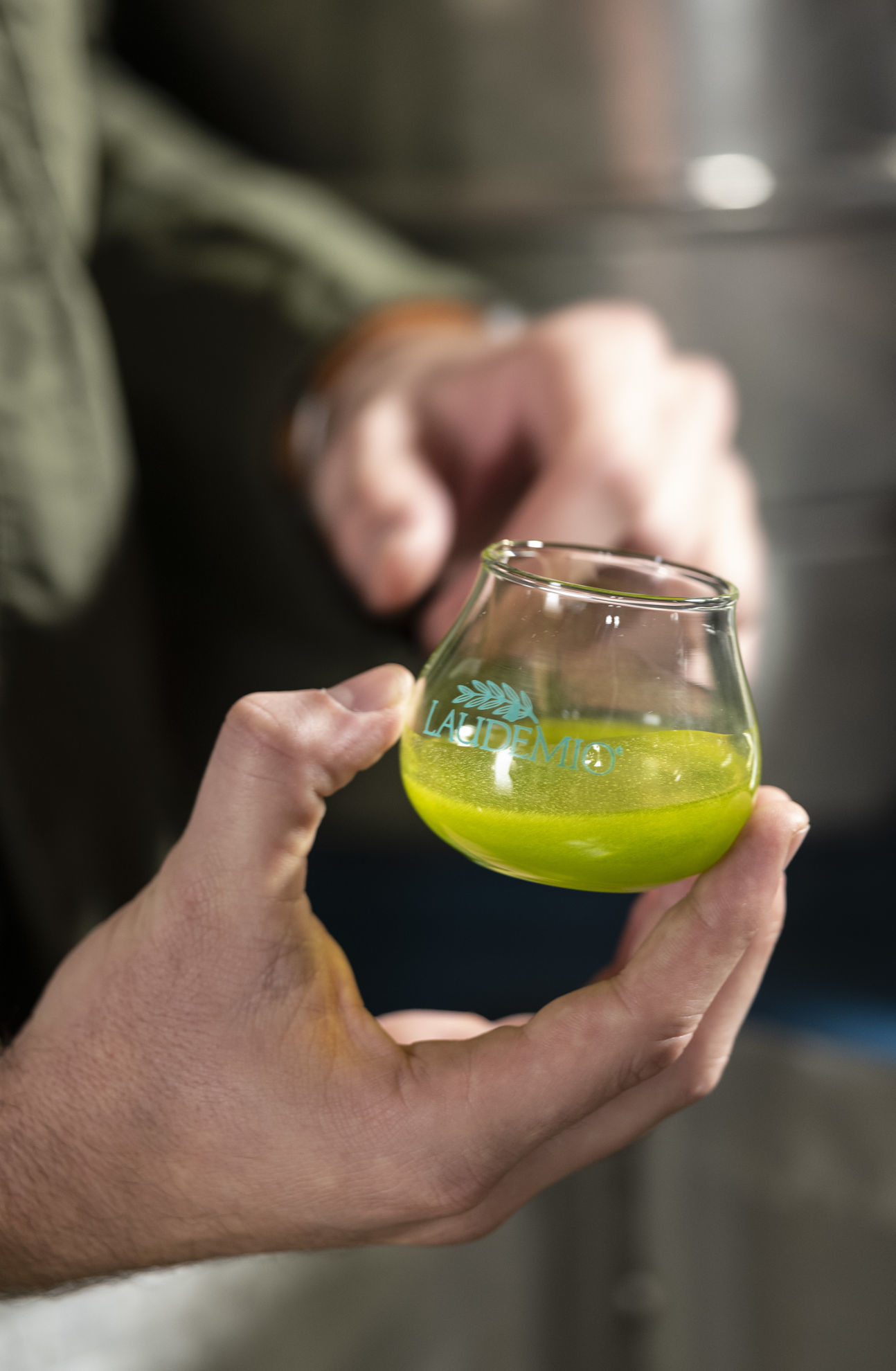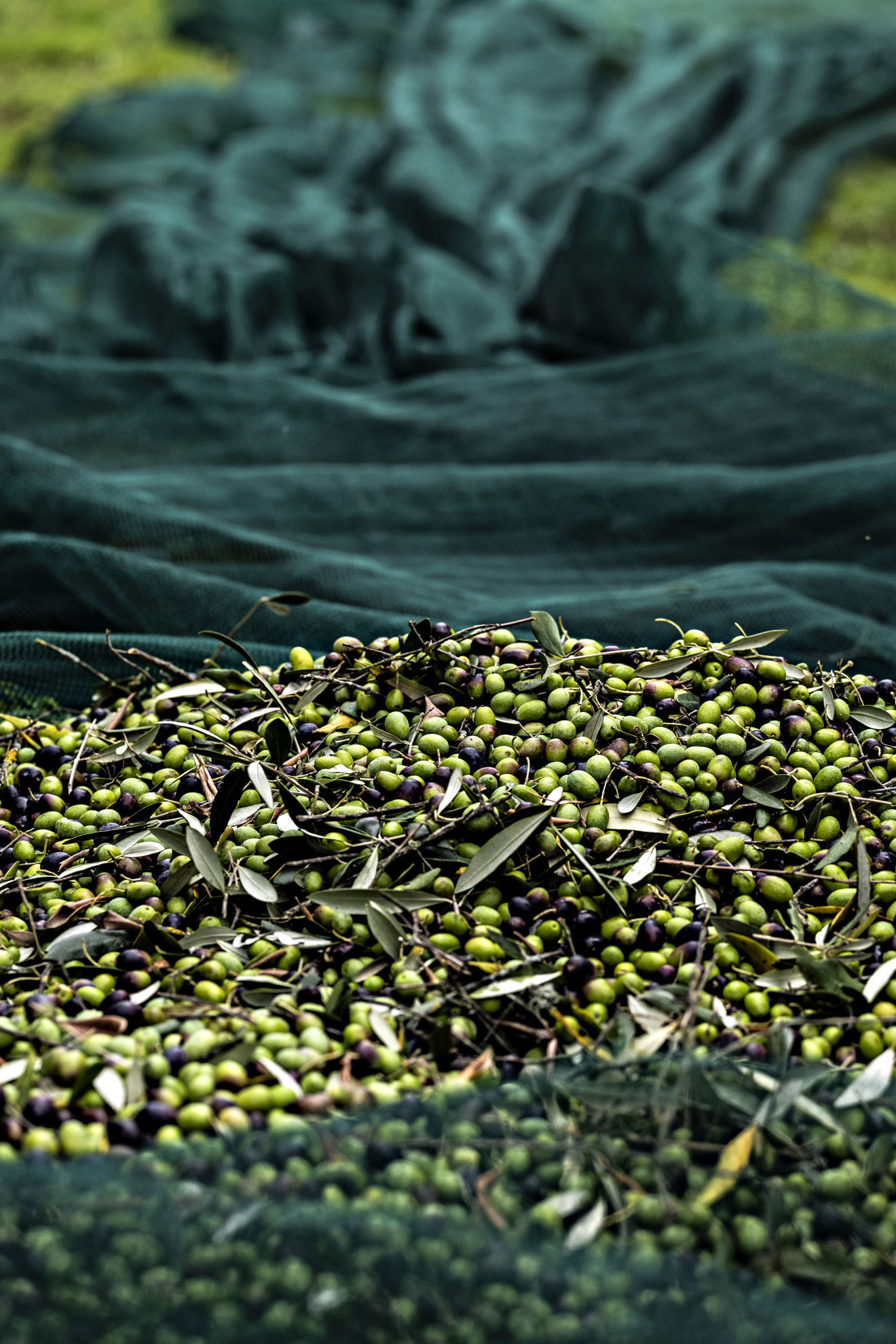
When tasting an olive oil, “How sour it is!” is not the same as to say “How acidic it is!”.
Acidity has nothing to do with the sour taste, as one might have thought. Olive oil acidity is determined by the amount of oleic acid present in it: the higher the percentage, the higher the acidity, which is very important, in fact, as it indicates the quality of an oil. Extra virgin oils of higher quality contain very few fatty acids, while virgin and lampante oils always have a higher quantity.
Keep reading to discover in detail what acidity is, which factors influence it, and why its role in olive oil is so important.
Olive Oil Acidity: Fundamental Concepts
Let’s start with the basics: what is olive oil acidity?
Oil is composed of two distinct parts: one is saponifiable, and the other is unsaponifiable. The former consists mostly of triglycerides, approximately 90%, which are molecules of glycerol combined with three fatty acids.
The fatty acids in olive oil are:
- Unsaturated (oleic acid)
- Polyunsaturated (linoleic, linolenic)
- Saturated (palmitic, stearic)
Oleic acid is the most abundant and has the role of determining the acidity percentage in an oil. The acidity is indeed determined by the percentage of free unsaturated fatty acids.
Determining this percentage is crucial, because an oil can be:
- Extra virgin, if <0.8%
- Virgin, if between 0.8% and 2%
- Lampante, if >2%
This value will help understand a fundamental part of the composition of olive oil and, therefore, whether it is destined for food or industrial use according to the categorisation regulated by the European Commission within Regulation EC 1989/03.
As you can see, the ratio between the percentage of free oleic acid is inversely proportional to the quality. Therefore, extra virgin olive oil acidity will be lower because it is of the highest quality.
What Factors Determine the Olive Oil Acidity Level?
It all starts with the olives: any environmental change causing oxidation can break the bond between glycerol and unsaturated fatty acids, thus causing their release.
Normally, the olive protects the triglycerides through the epidermis. It acts as an insulator against the oxygen present in the atmosphere. If the epidermis breaks, oxygen enters the fruit and begins to break down the triglycerides, increasing acidity levels.
Let’s see in more detail the factors contributing to the breakdown of triglycerides in olives and thus the rupture of the bond between glycerol and oleic acid:
- Inadequate harvesting, which can lead to damage to the olives and thus the rupture of the bond;
- The attack of the olive fly, resulting in erosion of the pulp and damage to the fruit;
- Another delicate step is the storage of olives before milling: the olives are unloaded, and those at the bottom can be crushed by the others;
- Too long time between olive harvesting and milling;
- Too high temperatures during the milling process;
- Inadequate extraction techniques in the mill;
- Inadequate storage in the warehouse.



How to Measure Olive Oil Acidity
If acidity is an indicator of how olives have been treated and, consequently, of the quality of the oil, then it goes without saying that knowing this value is fundamental.
The official method for estimating acidity in a specific quantity of oil is a chemical analysis indicated by the International Olive Council. We are talking about the titration of free fatty acids.
This method involves titration with a solution composed of standardised sodium or potassium hydroxide, using phenolphthalein as an indicator. Olive oil is dissolved in a solvent and then titrated drop by drop using a graduated burette. This is a quite lengthy procedure that requires the expertise of an operator.
Although not as precise as a chemical analysis in the laboratory, it is also possible to determine acidity with an acidimeter: a tool that uses the same titration method but with a simpler process.
Another tool for measuring the acidity of olive oil directly in the mill is the CDR OxiTester system: an analysis system designed to be used without the need for specialised personnel, requiring only a support surface and an electrical outlet.
At this point, however, a question arises: how can a consumer determine the acidity of a purchased olive oil? Unfortunately, there are no simple and ‘home-made’ methods for measuring the acidity of oil. Moreover, as already mentioned, acidity is not perceived by taste and even less by smell.
The colour of the oil can also be an indicator of quality. If it is emerald green, it is certainly excellent, but if it has a dark or even brown colour, then it has likely undergone a process of oxidation and rancidity. This means that it has not been stored properly or the container has not been hermetically sealed.
The Importance of Analysing the Extra Virgin Olive Oil Acidity Level
Through the official method, thanks to some precise calculations made at the end of the whole procedure, it is possible to determine very accurately the percentage of free oleic fatty acid and thus the acidity level of olive oil.
However, with olive oil testing, this element is not the only quality indicator. So are peroxides, waxes, and ultraviolet light absorption. There are all elements that contribute to the properties and health benefits of olive oil.
Conclusion: The Role of Acidity Level in Olive Oil
Although the term ‘acidity’ may be misleading, as it does not refer to the sour taste of the oil but rather to the percentage of free oleic acid, it is a key indicator of its quality and freshness.
Low olive oil acidity indicates a production process carried out with care and professionalism with an adequate storage method. This is exactly what happens with Laudemio Frescobaldi extra virgin olive oil.
Knowing the acidity of the oil is essential for both producers and consumers as it provides valuable information about its suitability for culinary use. An accurate analysis of acidity , along with other quality indicators, guarantees an excellent olive oil both in terms of nutritional and sensory attributes.
In conclusion, the acidity of olive oil is a key aspect to be considered to ensure a high-quality product on our tables and in our kitchens.